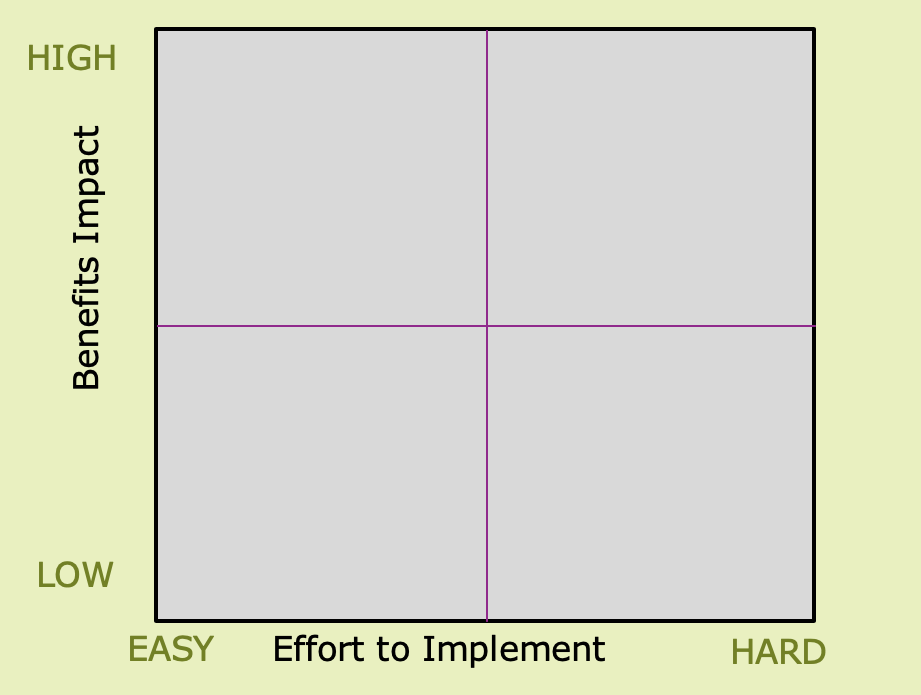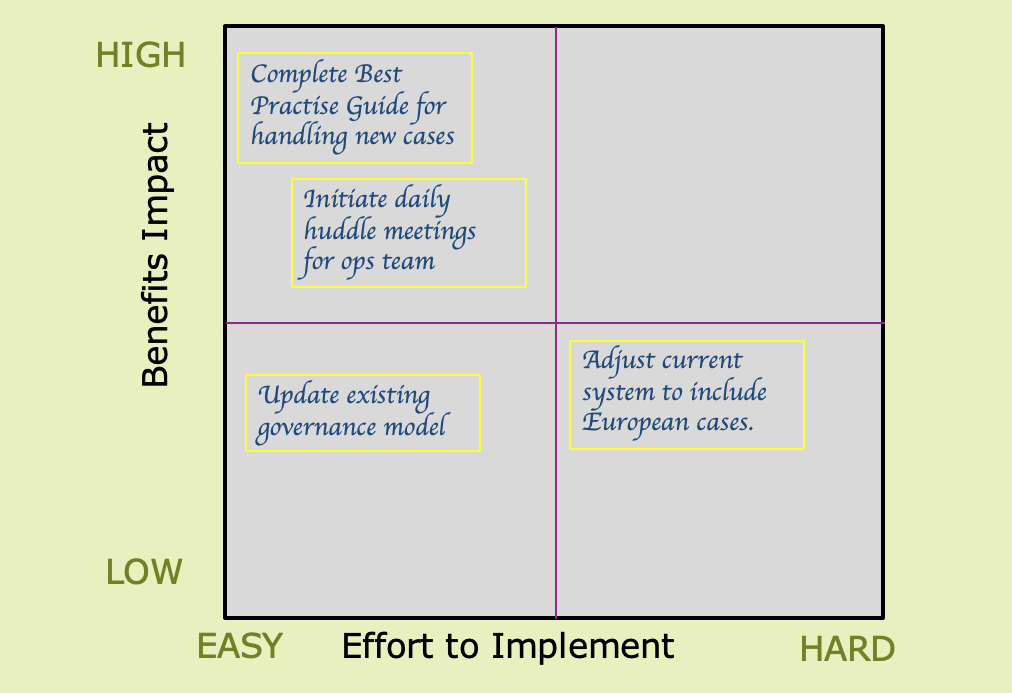Following a successful ideas generation session, it can feel a little challenging trying to work…

ChangeWise QuickRead : Categorising and Prioritising Ideas (Part 2 of 2): Ease/Impact Matrix
Following our QuickRead on Categorising and Prioritising Ideas Part 1, we walked you through some simple steps on how to group ideas and narrow down the options for implementation.
Our final step for this phase is to understand which ideas should be implemented first based on two factors:
1: Ease of implementation
2: Impact on desired benefits
To do this, we use a tool called the Ease and Impact Matrix. Like Affinity Mapping and the N/3 method, this technique is a collaborative way to agree which ideas should take priority.

Photo by Maxime Horlaville on Unsplash
Sounds good……..but where do I start?
Getting started is easy……..
1: Construct an empty diagram with 4 quadrants. Label the horizontal axis with ‘effort to implement’ and the vertical axis with ‘benefits impact’. Make sure the team can all see this visual.

2: The facilitator asks the team to collectively assess each idea based on the 2 factors in the matrices:
- Is the idea easy or hard to implement?
- Will the idea have a high or low impact on benefits?
This provides each idea with 4 possible outcomes:
- High benefit reward/easy to implement
- High benefits/hard to implement
- Low benefits/easy to implement
- Low benefits/hard to implement
The idea is then placed into position on the chart.
Let’s look at some examples to help:
💡 Complete Best Practise Guide for handling new cases (this is easy for the team to implement and the benefits are likely to be high as expensive errors will be eliminated).
💡 Adjust current system to include European cases (this would require expensive external IT support and the benefits are expected to be low as European cases are not causing the costly errors).
💡 Initiate daily ‘team huddle’ sessions for operations teams (easy to implement as no additional training/costs and would significantly increase team efficiency).
💡Update existing governance model (this would be easy to implement but the benefits would not be significant as it will only remove a small number of processing issues).

3) Once the team have agreed where ideas should be placed, you will be able to see which items should be prioritised. Suggestions on the upper left section of the chart should be implemented first, since they will be easy to implement and will provide the biggest benefit return. They are the ‘quick wins’. High benefit/hard to implement ideas should still be included in future plans, but these must not delay the quick wins. Low impact/low effort items might be progressed during quieter times, with high effort/low benefit ideas being parked or dismissed.
🙂 Tip! Post-It Notes work really well for this exercise.
Additional Benefits
⭐️ Simple and inexpensive to complete
⭐️ Acts as a collaborative way to focus progress, so great for achieving buy-in and ensuring everyone has a say
In Summary
The Ease/Impact Matrix is a collaborative, inexpensive and simple way to categorise ideas according to how much effort and time they will take to implement, along with the benefits they will deliver – helping teams to move from ideas to action!
If you would like to know more about which Lean tools and techniques are most effective in helping your team plan a successful strategy, contact us at info@changewise.co.uk and let’s get you started on your Lean journey!
ChangeWise believes employee engagement is the foundation for successful Change. Training and coaching your people to use simple continuous improvement techniques will enable your organisation to continuously adapt and stay ahead in a constantly changing and challenging environment.
For updates and interesting Lean Change insights, connect with us on LinkedIn.



